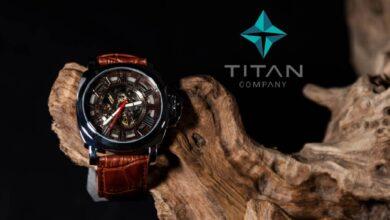Smart Energy Finances: $18 million for the development of EV batteries based on wood chips
The investment in CarbonScape, which will introduce biographite, a wood chip-based substitute for graphite generated from forest waste, to Europe, takes the top spot in this week’s Smart Energy Finances.

Additionally on the horizon are the US subsidiary launch of RTE International (RTEi), which will concentrate on HVDC projects, and the Dutch government’s equity investment in grid operator Stedin.
Carving out EV batteries with CarbonScape
In order to enable cleaner lithium-ion batteries for EVs and grid-scale energy storage, New Zealand-based CarbonScape, a producer of battery materials, has announced a $18 million investment. This move indicates the company’s plans to commercialize its bio graphite production in Europe and the US. The company claims that even though graphite makes up up to 50% of the weight of a lithium-ion battery, the estimated global demand is expected to outpace supply by 777,000 tonnes annually by 2030. A significant amount of the cost of a battery is accounted for by the manufacturing of graphite, which is also one of the major CO2 emitters in the supply chain for battery raw materials.
CarbonScape promotes bio graphite, which is made from wood chips from forestry waste and other forestry and timber sector by-products, as a sustainable option for battery supply chains, which are currently reliant on petroleum-based or mined graphite. The company explains that it will on-shore production of a crucial component to meet the rapidly expanding demand while also ensuring supply security for battery makers in Europe and the US in the face of growing supply chain instability. Carbons cape, the first-to-market manufacturer of bio graphite, could potentially offer a much-needed alternative for EV and grid-scale battery supply chains thanks to the investment led by Store Enso, ATL, and other partners.
A US subsidiary of RTEi
In the US, RTEi has established RTE International Inc., which will concentrate on HVRTE International Inc. will offer expertise in design assessment, offshore grid interconnections, and thorough EMT (electromagnetic transients studies), building on RTEi’s success in European projects, while also developing customized solutions for the American market and forming new local partnerships. DC projects “Creating our US subsidiary is a momentous milestone in RTE international’s journey,” says Markus VOR DEM BERGE, director of Power Electronics and Studies at RTE international. “With this move, we are able to actively interact with US stakeholders and further HVDC technology innovation. In the field of HVDC projects, our European knowledge and the strategic positioning of our new subsidiary put us in a strong position.
RTE International is an engineering and consulting firm with operations in every facet of energy transmission.
RTE International, a division of RTE, the biggest transmission system operator in Europe, provides participants in the energy sector with specialized solutions for the construction, management, and upkeep of their networks. This covers electrical system research, network infrastructure engineering and supervision, network maintenance optimization and digitalization, and support for IT technologies associated with the power network.
Capital buy-in
The grid operator Stedin has added the Dutch government as a new shareholder. With the transaction, the government would acquire an 11.9% stake in Stedin and increase its ownership by €500 million ($531 million). According to Stedin, the funds will be utilized to continue making investments in the enlargement and protection of the electrical grid. Stedin is investing heavily in the expansion of the electricity grid, anticipating at least €8 billion ($8.5 billion) by 2030, in order to connect homes, ensure that businesses can switch to sustainable electricity, and install more charging stations, solar and wind farms. By 2030, the demand for electricity is expected to have doubled.
It is wonderful news that we as shareholders have secured an agreement with the Central government, said Maarten Struijvenberg, chairman of the Shareholders’ Committee and Rotterdam alderman in charge of finance. A crucial stage is the government becoming a shareholder.
We have already invested $479 million ($451 million) as stockholders. Stedin will be able to carry out its planned investments to strengthen and expand the grid for industries like residential development thanks to the additional funding from the government. Currently, Zuid Holland’s municipalities make up the majority of Steding’s 42 shareholders. The Dutch States must approve the transaction before the government can join the ranks of shareholders.
If granted, “Stedin will have a high level of certainty when it comes to its capital requirements,” the grid operator claimed in a release. Recent statements from the provinces of Utrecht and Zeeland indicate that they are also interested in becoming shareholders, and Stedin is still in contact with each of them. “Now that the Central government is becoming a shareholder, their equity contribution also has a positive effect on our credit rating,” said Danny Benima, CFO of Stedin. This will provide us an additional borrowing capability of about €1.7 billion ($1.8 billion) overall.







